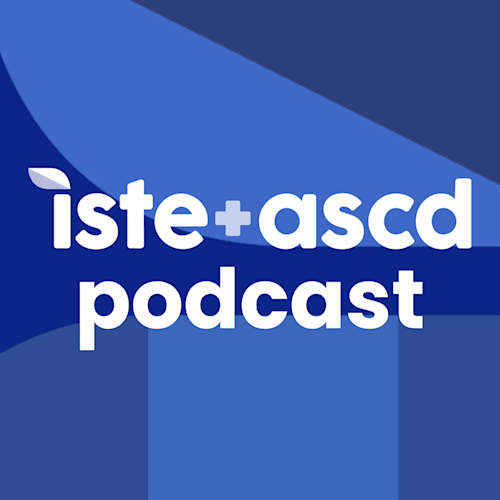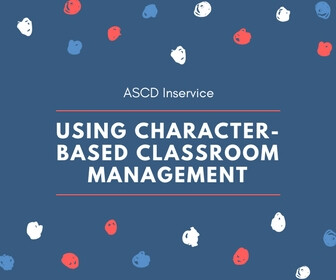“My teachers know their data,” the principal told me. “But they’re not doing anything with it.”
She was right. When I visited this school as a coach, teachers eagerly showed me spreadsheets and test breakdowns. They could identify who scored below benchmark—but when I asked, how did that change your instruction?—the room got quiet.
Knowing data is only the first step. Using it to impact learning is where the real work, and growth, begins. For that to happen, we need to shift from focusing on what we teach to what students learn.
Why Knowing Data Isn’t Enough
This mindset shift can transform practice. As principal Samuel Nix shared on my Have a Life Teaching podcast, his former school rose from the bottom of its district to one of the top 30 in the country for student growth by doing one thing: focusing on learning outcomes—not just teaching inputs.
This focus is especially urgent today. A 2023–24 NWEA report shows post-pandemic student growth remains behind pre-pandemic trends, particularly among marginalized groups. Gaps are widening, not closing.
Knowing data is only the first step. Using it to impact learning is where the real work, and growth, begins.
We can’t close those gaps with good intentions alone. We need structured tools to connect the dots between what students demonstrate and how we respond.
The Student Achievement Chart
In my work with schools and teaching candidates at Brooklyn College, one strategy has made a clear difference: the student achievement chart. This simple framework helps teachers plan, monitor, and adapt to instruction based on evidence—not assumptions. Here’s how it works, illustrated through a recent cycle where a student teacher used the tool to support 6th graders in identifying a theme in a text (RL.6.2).
1. Define a Clear, Measurable Objective
Start with a specific learning goal from your unit. For example: Students will identify and explain the theme of a literary text using supporting evidence. This becomes the anchor at the top of the chart. Every step that follows will support students in achieving this goal.
2. Create Performance Descriptors
Next, describe four levels of student performance for this objective:
- Exceeding: Identifies layered themes and connects to other texts.
- Meeting: Clearly states a theme and supports it with evidence.
- Approaching: Names a vague or general theme without support.
- Emerging: Confuses theme with plot or topic.
These go to the left column of the chart, with corresponding characteristics of student work listed beside each level. In our theme unit, this helped the teacher anticipate what success—and struggle—might look like before students began the task.
3. Gather Pre-Assessment Data
Use a targeted pre-assessment aligned to the objective. In this case, the teacher asked students to read a short story and write a paragraph identifying the theme with evidence. The results were telling:
- 6 percent exceeding
- 17 percent meeting
- 30 percent approaching
- 47 percent emerging
These results were recorded in the chart using student initials (or anonymized codes) and percentages for each class. This visual snapshot helped the teacher plan with intention. The figure below shows an example of what the chart looks like.
Learning Objective: Students will identify and explain the theme of a literary text using supporting evidence (RL 6.2).
Performance Level | Descriptor of Student Work | Student Pre-Assessment Results | Student Post-Assessment Results |
|---|---|---|---|
| Exceeding Proficiency | Identifies a multi-layered theme with strong text-to-text connections | AB, CD (6 percent—2 students) | AB, CD, EF, GH, IJ (23 percent—5 students) |
| Meeting Proficiency | Clearly states a theme and supports it with evidence | KL, MN, OP (17 percent—3 students) | KL, MN, OP, QR, ST, UV, WX, YZ (40 percent—8 students) |
| Approaching Proficiency | Names a general theme without clarity or support | AA, BB, CC, DD, EE, FF (30 percent—6 students) | AA, BB, CC (13 percent—3 students) |
| Emerging Proficiency | Confuses theme with topic or summarizes plot | GG, HH, II, JJ, KK, LL, MM, NN (47 percent—8 students) | HH, KK (13 percent—2 students) |
4. Plan Instruction Based on Results
Here’s where the tool really supports differentiation.
For emerging and approaching students, the teacher used small-group instruction with anchor charts, sentence frames, and graphic organizers to help distinguish the theme from summary or topic.
Students already meeting proficiency engaged in peer feedback and revision. Learners exceeding expectations analyzed multiple themes and explored text-to-text connections.
The chart itself doesn’t have to include these strategies, but it creates the clarity needed to design them.
5. Post-Assessment: Measure Movement
After two weeks of targeted instruction, students took a post-assessment aligned to the same standard. Their new performance levels were added to the chart—again noting numbers and percentages at each level.
This revealed significant growth:
- Only 13 percent remained at emerging
- 63 percent were now at or above proficiency
For one student, this shift was striking. On the pre-assessment, they had summarized the plot. On the post-assessment, they identified a theme and backed it up with two well-chosen examples from the text.
6. Analyze Growth
The next step: look beyond individual scores to the bigger picture. Which students improved by multiple levels? Who stayed the same? What patterns emerged?
This teacher saw that students who engaged in peer feedback made notable gains. Meanwhile, several students who remained below proficiency hadn’t consistently participated in small-group reteach sessions—an important insight for future planning.
7. Reflect with Students—And Adjust
Students should be partners in this process, not passive recipients. After the post-assessment, the teacher held one-on-one conferences and anonymous class reflections.
Students tracked their progress and set new goals—some wanted to improve their use of evidence; others aimed to tackle more complex themes.
Reflection deepens ownership and gives the teacher actionable data for follow-up instruction.
This reflection deepened ownership and gave the teacher actionable data for follow-up instruction. For example, they planned to spiral theme work into an upcoming poetry unit and continue targeted small-group support.
Putting Student Data to Work
Thanks to this process, my student teachers aren’t just tracking what they’ve taught—they can pinpoint how each student is progressing and what supports they need next. It’s a level of clarity and instructional precision that even experienced educators often struggle to maintain.
The student achievement chart helps teachers move beyond intuition or coverage and anchor their planning in evidence. It’s not just a tool—it’s a way to stay focused on what matters most: meeting students where they are and helping them move forward.
Using Data to Foster Hope in Schools
Jim Knight and Michael Faggella-Luby, authors of Data Rules: Elevating Teaching with Objective Reflection, discuss ways schools can redefine data use to have a more positive impact on student learning and teacher practice.









